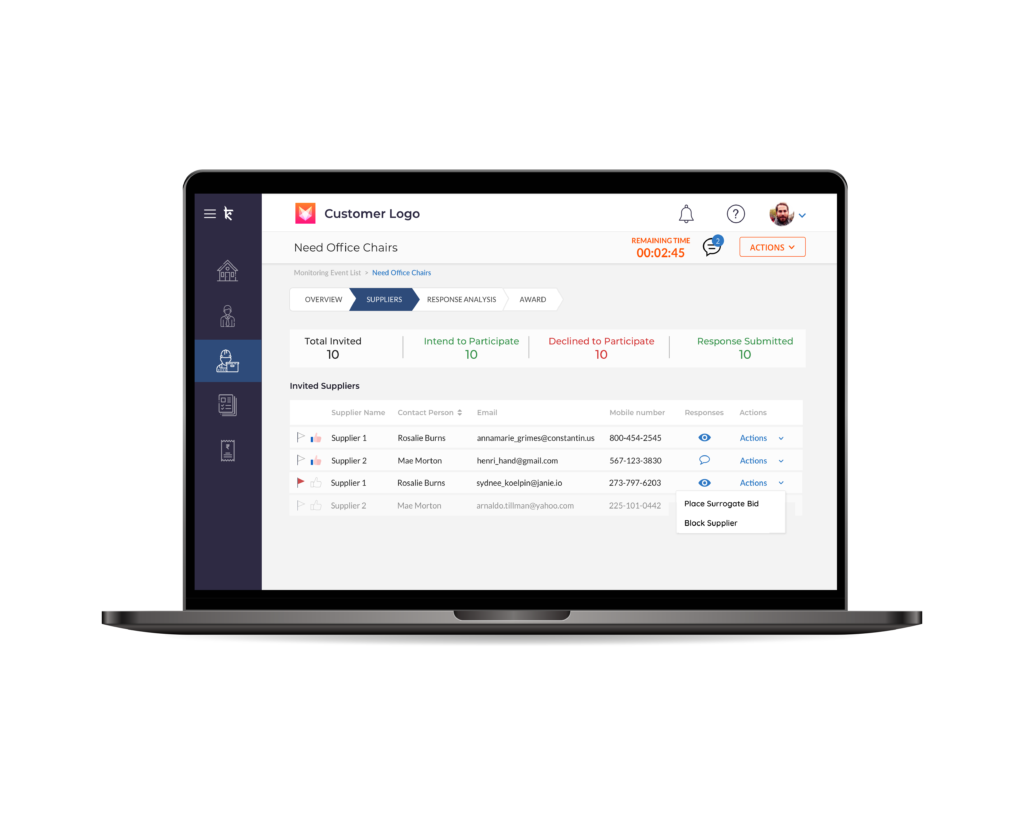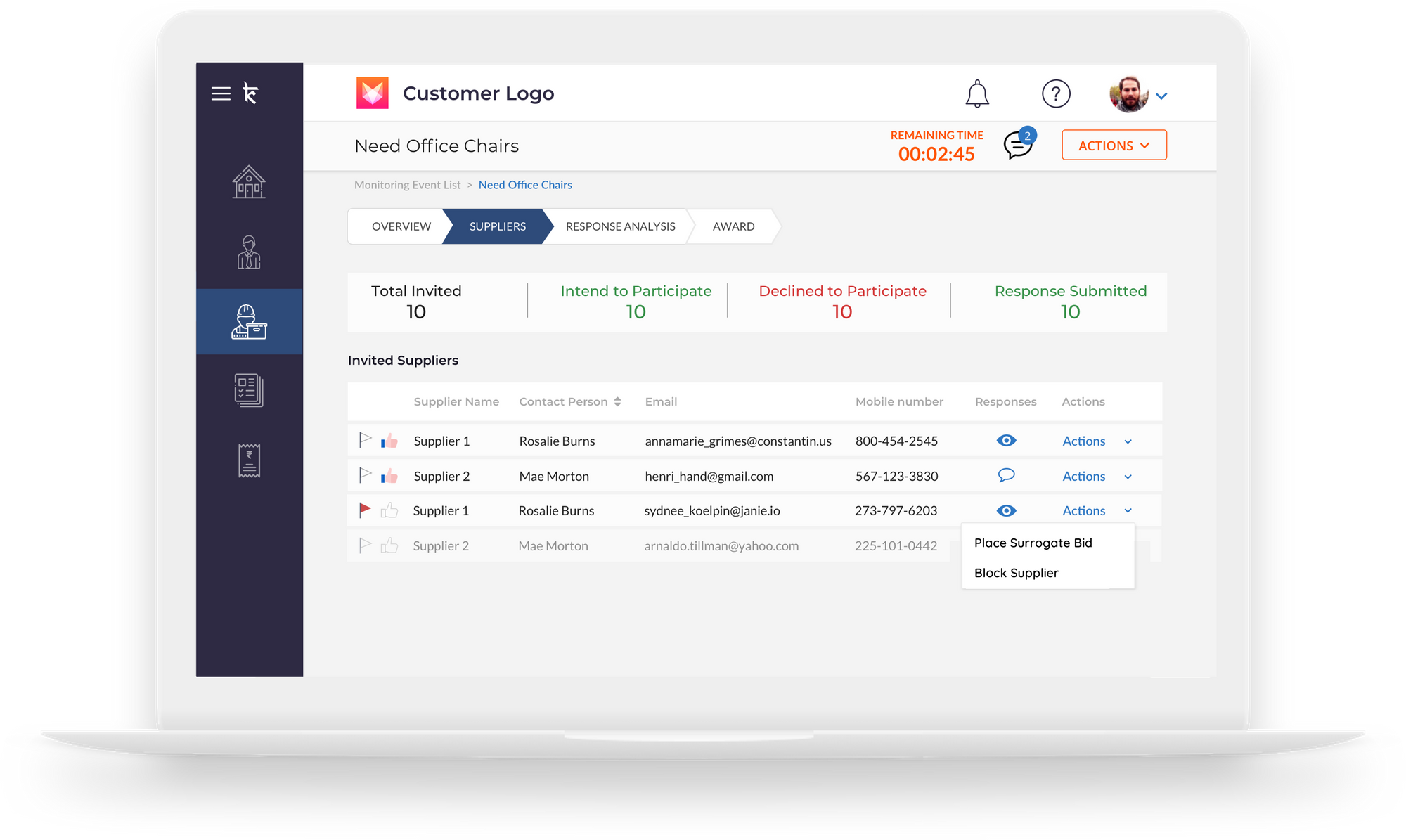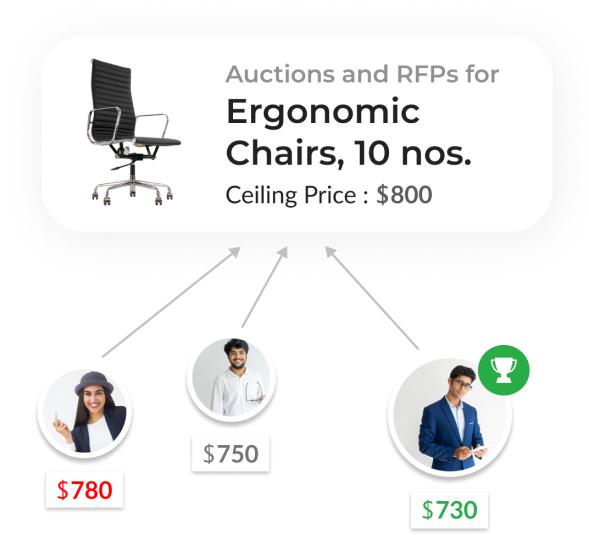An innovative eSourcing solution that allows companies to think beyond Reverse Auctions!
An eSourcing solution that leverages knowledge management and team collaboration to deliver maximum value




Build Questionnaires, Pricing Sheets and Auctions ensuring a high level of compliance and transparency

Maintain a contract repository, track expiry dates and contract obligations and greatly minimize risk

Approve and reject supplier categories within supplier profiles, provide dynamic feedback to sourcing teams

Flexible program management support to assist the team in leveraging the solution capabilities




Reveal rank or best price to suppliers participating in an RFP. Trigger multiple bids from suppliers when the RFP is live.
Conduct multiple auction formats with configurable options. Maximize supplier participation.
Build knowledge templates and share with co-buyers. Reduce time to create and publish RFPs to minutes.
Maintain a repository of active, expired and renewed contracts. Mitigate risks by assigning tasks against a contract and setting expiry alerts.
Analyze bids as soon as they are received from the supplier. Mitigate risks with critical information at a glance.
Include ceiling prices per supplier for both RFPs and Auctions. Greater savings in RFPs and no loss of savings in Auctions.
Engage cross-functional stakeholders to weigh in on the supplier selection process. Better outcomes to sourcing events.
Create several award scenarios to optimize multiple criteria. Configure an approval form to have the right award scenario approved.

